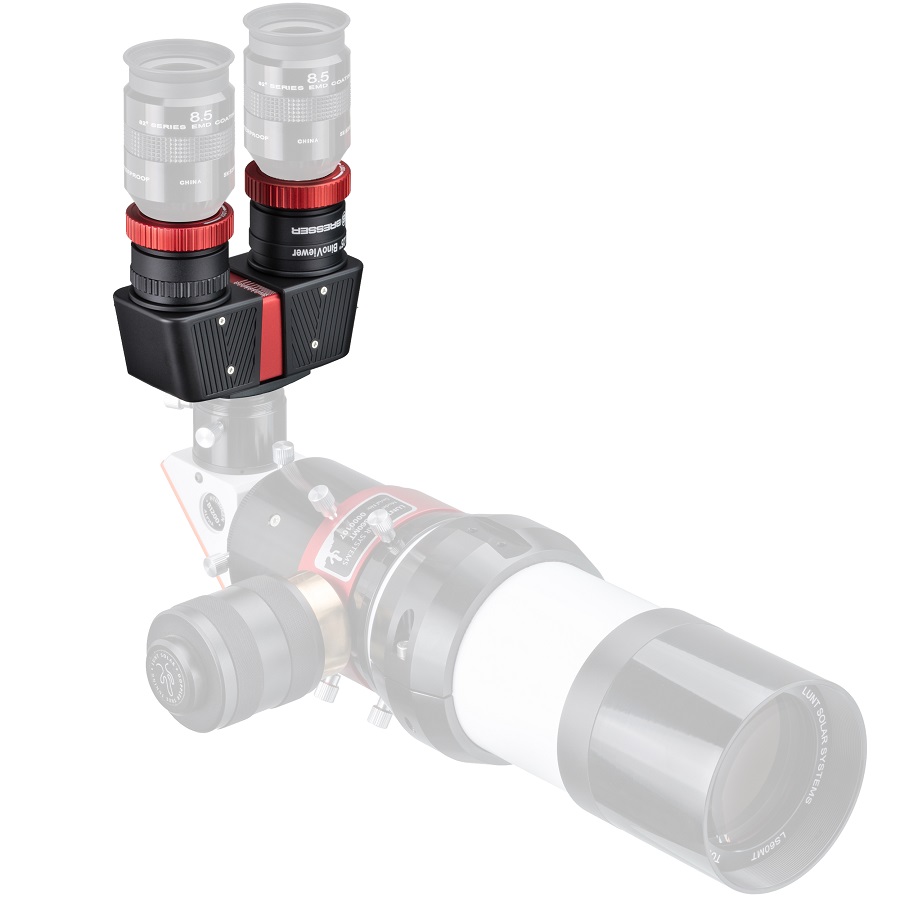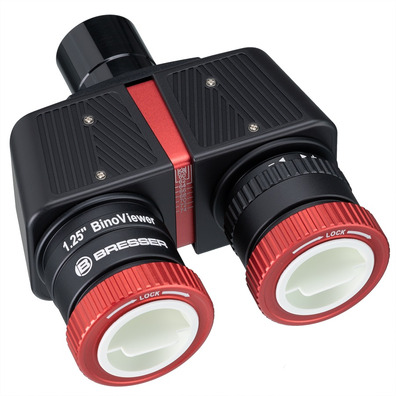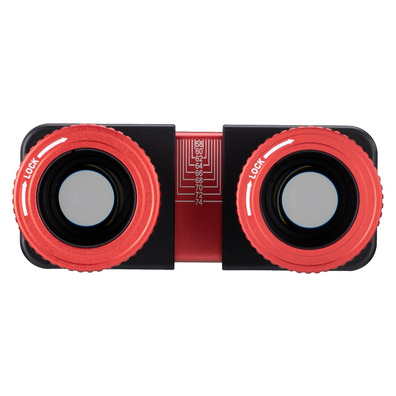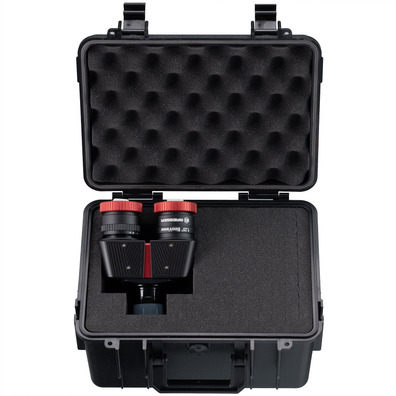Bresser Bino Viewer Deluxe 1.25 ''
£330,65
You will receive your order within 5 - 6 days if you do it from Monday to Friday before 18 pmView options
Bresser Bino Viewer Deluxe 1.25 ' '
Looks better with two eyes
The BRESSER's BinoViewer Deluxe allows you to look at astrological objects in a relaxed way with both eyes and with a lot of detail using a single eye. The genes created from the moon, the planets, and the globular cells are observed in a particularly impressive way. To detect details on deep sky objects, such as the Ori nebula, it will be a lot of things to do. At the same time, this binviewer is very easy to handle. Thanks to the new patented optical system, you can focus on any telescope. All you need is a pair of eye ids to enjoy this experience of visi ón dram & surround.
¿ C &o use the BinoViewer?
Since BRESSER's BinoViewer Deluxe does not require an additional light path (retro-focus), it can be used with any telescope-including Newtonians and short-focus refracting telescopes, which traditionally suffused when using binoviewers. No light path correction or similar attachment is required. If you can focus an eye on 1.25 ' ' s, the binviewer also will work. The focal distance of the eye and the tama ñ or the field of vision of the ocular used are preserved in the first place. As with the "prism" prism, an eye is first focused with the telescope's focus. The second ocular can be approached by the helical focal point of the binocular. The required interpupal distance is carefully adjusted in a range of 58-74 mm with the help of a linear sliding mechanism, with graduated marker, to help you find your ideal interocular adjustment. Self-centering helical eye grips are used, rather than side-mounted butterfly screw eye retainers, which decreases the possibility of collimation of the two ocular between the two. The fact that this dise ñ or binolor uses a linear slide mechanism well disse ñ to adjust the interpupal distance, rather than a ñ or traditional hinge m &aecs inexpensive to produce, tambi n helps the retention of the colimaci n.
¿ Qu &eUte; objects can be observed with this attachment?
In reality, all the objects that were previously observed with the telescope in cuesti n, although monocuarly with an eye. Since there is no increase factor in the binvisor, even low increases can be achieved. This makes not only the Moon, the planets, and the globular mules, but also the bright objects of the deep sky are very interesting observation objects. The use of both eyes involves a relaxed view of the use of a single eye. Although the true depth of the field in infinity is a bit more than the greatest &iuteres of the telescopes and binoculars, users notice the human brain tries to impose field depth effects ("type 3d"). In the stereosc observations, the pair of the binoculars are used. The biggest difference that the greatest of observers comment when they compare the views of the binoculars like these, in front of the views with a single eye, is the extra detail in the greatest of the observable objectives. A relaxed vision and the extra minimum detail on the objects are the two main benefits of the binovial &oatern, which the BRESSER Bino Viewer Deluxe 1.25 ' ' certainly offers.
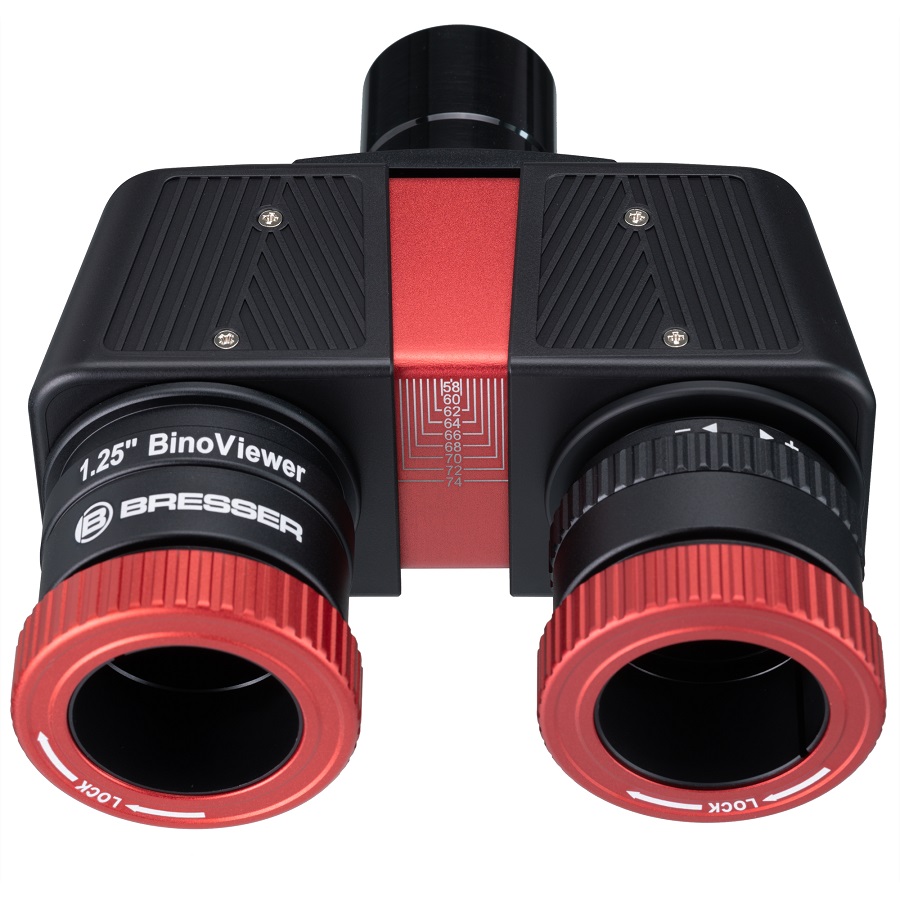
Tambi &eacutin is ideal as an accessory for solar telescopes
A very special application is to use the BRESSER BinoViewer Deluxe in combination with all the solar telescopes. The sun-rich esf way with all the details of its surface is shown impressively. Field depth effects when viewing the silhouetted filaments against the solar surface are especially pleasing to observe.
&iex; Important Note!: Do not use the BRESSER Binovwer Deluxe without a suitable solar telescope or a secure solar filter in front of the lens lens of the telescope. Otherwise, there is a serious risk of going blind.
Mec &anicas and high quality materials
All BRESSER's BinoViewer Deluxe is made of high quality materials. Except for the outer covers of the plastic, all the components are anodized aluminum. Especially remarkable is the low-slack sliding mechanism for the adjustment of the interpupillary distance and the precise rotation of both ocular adapters. The wide surface of the project (s) keeps the eye (s) on its site in a safe manner, and it also focuses the autom (s) on the optical axis. The unilateral adjustment has a helical drive without slack and allows for fine corrections. For a safe transport, a high quality transport and transport system is included.
¿ Qu éres can be used?
All eyes with a ca ñ &oacution of 1.25 ' ' and a field stop of up to 22 mm. Depending on the interpupal distance, the outer tube of the eye housing must not exceed a value of approximately 50 mm.
1.25 ' ' filter Rosca available
A second set of filters is not required to operate the BRESSER Binocular Approach Deluxe. The desired color or nebula filter can be directly threaded onto the 1.25 ' ' nasal bridge. In this configuration, when the ocular changes are changed to affect an increase change, it is not necessary to exchange the filters.
Single mirror lens system with Ohara's lanthanum glass material (Jap &oacutin)
The BRESSER Deluxe binocular viewfinder is equipped with a unique mirror lens system. This has the advantage of a greater transmission of light and a lower aberration. The resulting image is simply bright and n &itised. For this purpose, the exclusive lanthanum glass material of Ohara (Jap ón) has been used and, in addition, all the optical surfaces are equipped with a complete multilayer coating of broadband. For the last time, the splitter mirror of the beam has a coating diel &eictrico of 99% and completes the excellent dise ñ or ptych.
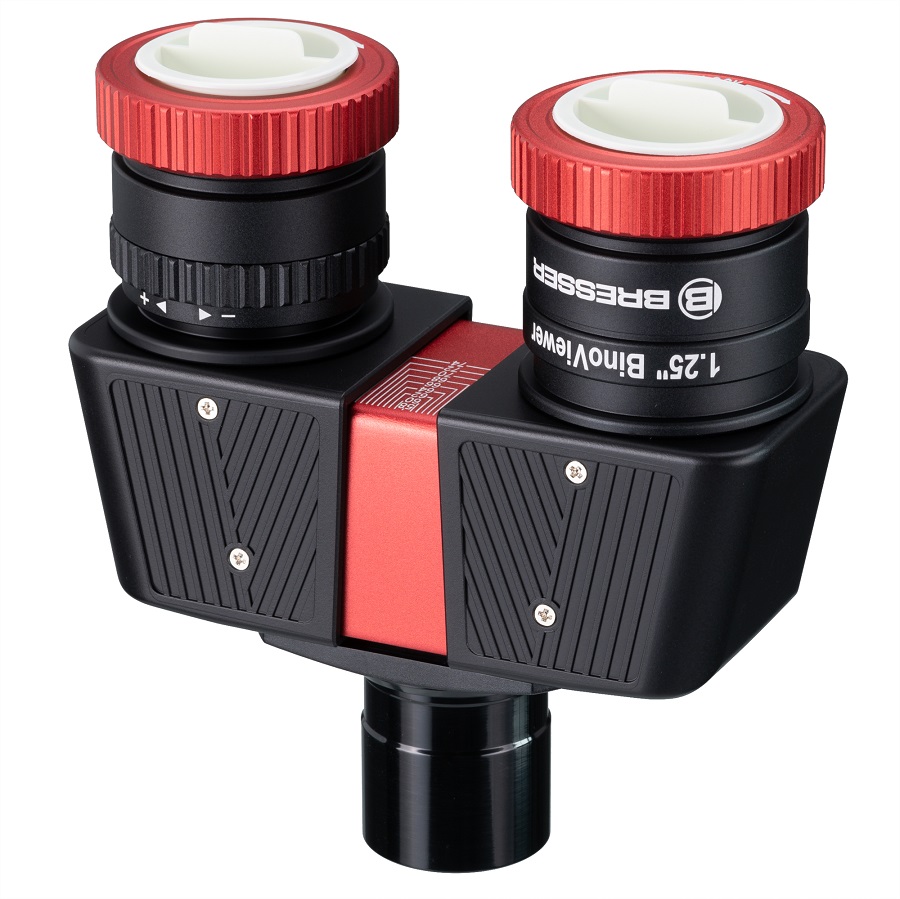
Character íres:
- Allows binocular observations with all telescopes
- A relaxed vision and c ó fashion
- Three-dimensional display experience
- Apto for all telescopes with eye connection of 1.25 ' '
- No additional light path is required
- No increase factor in binocular attachment
- Low increases with large visi fields can be achieved
- To observe the moon, planets, and deep sky objects
- MecPrecise and robust
- Sliding mechanism for adjusting the interpupal distance
- Compensation for power supply with fine helical drive
- A wide eyecap with a self-centered, self-centered, wide-eye rotation
- The filter Rosca of 1.25 ' ' (M28.5 x 0.6 mm) available
- Lente and mirror of Ohara's lanthanum glass (Jap &obutin)
- Advanced multi-layer broadband coating all surfaces &o. 99% (99%
- Malet &iastit for high quality transport included
Content:
- Bino Viewer Deluxe
- Antidust Tapa
- Transport Study
